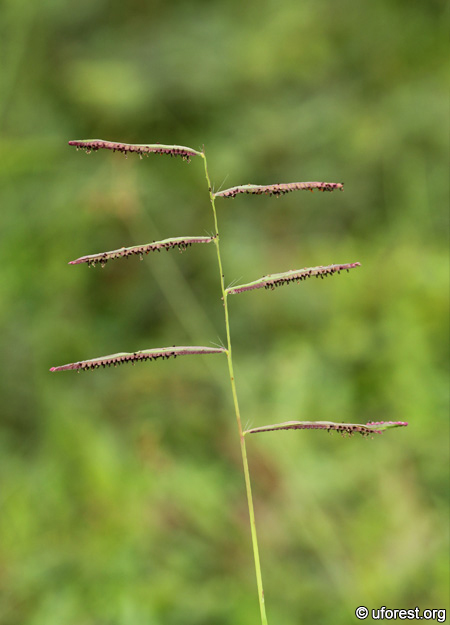Paspalum longifolium Roxb.
| Etymology | Genus | Greek name for Millet Grasses |
|---|---|---|
| Species | Having long leaves | |
| Family | Poaceae | |
| Synonyms | Paspalum flexuosum Klein ex J.Presl, Paspalum houttuynii H.C.Hall ex de Vriese | |
| Common Names | Long Leafed Paspalum | |
| Status | Native: Common | |
| Form | Herb | |
| Native Distribution | East Asia, Indian subcontinent, Indochina, Malesia, and Northern Australia | |
Diagnostics:
Paspalum longifolium is most easily distinguished by its inflorescence, which have branched into alternating rows bearing purplish spikelets. The junction of each spike with the inflorescence stalk have prominent erect hairs. Vegetatively, the leaves are long, erect, and folded at the mid-vein. The side of the leaf shealth is lined by a margin of white hairs.
Interesting Facts:
Gilliland (1971) stated that the Long Leafed Paspalum is often found at wet areas, though those I have seen are on pretty much dry land.
Form of the Long Leafed Paspalum in a scrubland.

The inflorescence, with alternating rows.

Side view of raceme (above); Bottom view showing 4 rows of spikelets (below)

White hairs at the junction of raceme and inflorescence stalk.

A dense turf of white hairs at the leaf shealth.

Leaves are erect, long, and folded the mid-vein.
References
Gilliland HB. (1971) A Revised Flora of Malaya. Volume III: Grasses of Malaya. Government Printing Office, Singapore. 319 pp.Author: Siyang
Posted: 2013-05-24 / Modified: 2017-12-25
Google Ads